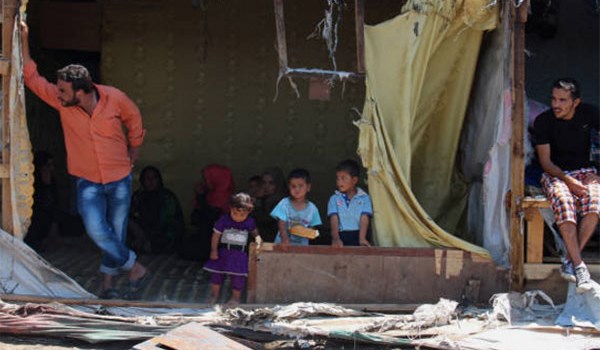
RNA - Around 6 million Syrians currently remain displaced within their own country. Findings indicate that the vast majority of people returning (84 percent) had been displaced within Syria. The Geneva-based UN International Organization for Migration (IOM) reports that the next highest number of people (16 percent) returned from Turkey, followed by Lebanon, Jordan and Iraq. Those from Turkey returned mainly to Aleppo and Hasaka governorates.
An estimated 27 percent of the returnees state that they did so to protect their assets or properties and 25 percent referred to the improved economic situation and security in their area of origin. Other factors people give IOM and partners as their reasons for returning include the worsening economic situation in the place where they were seeking refuge (14 percent), social or cultural issues such as tribal links, political affiliations or any obstacle preventing integration in their area of displacement (11 percent), and the improvement of the security situation in their area of return (11 percent), that is the government-held areas.
Half of all returnees in 2016 were to Aleppo governorate, says IOM. The report shows that similar trends have been observed in 2017. Consequently, an estimated 67 percent of the returnees returned to Aleppo governorate (405,420 individuals), 27,620 to Idlib governorate, and 75,209 to Hama governorate, 45,300 to Raqqa governorate, 21,346 to rural Damascus and 27,861 to other governorates.
Within the governorates mentioned, Aleppo city, received the most returnees, followed by Al Bab sub-district in Aleppo governorate, Hama sub-district in Hama governorate, Menbij sub-district in the northeast of Aleppo governorate, and Khafsa sub-district also in Aleppo governorate. According to reports, almost all (97 percent) returned to their own house, 1.8 percent are living with hosts, 1.4 percent in abandoned houses, 0.14 percent in informal settlements, and 0.03 percent in rented accommodation.
Access of returnees to food and household data-x-items is 83 percent and 80 percent respectively. Access to water (41 percent) and health services (39 percent) is dangerously low as the country’s infrastructure has been extremely damaged by the conflict. The report indicates that an increasing number of Syrians displaced within the country appear to be returning home, adding that the total figure by end of July this year was already close to the 685,662 returnees identified in the whole of 2016.
While trends of returnees increase, Syria continues to witness high rates of displacement. From January to July 2017, an estimated 808,661 people were displaced; many for the second or third time, and over 6 million in total currently remain displaced within the country. This makes up to 1 in 3 inhabitants. The figure is particularly relevant in view of the fact that the Syrian population is estimated to be slightly more than 21 million, i.e. one in three Syrians are still displaced.
Unfortunately, the ongoing air war by the United States and its associates is forcing record numbers of people to flee their homes seeking relative safety within or across government-held areas. The growing complexity and unpredictability of this battle is resulting in increasingly protracted displacement situations which challenge the versatility of the traditional durable solutions – voluntary return and sustainable reintegration, sustainable settlement elsewhere and sustainable local integration.
Taken together, there is only one solution to the Syrian crisis – ending the war. The regime-change war by Washington and associates must be brought to a conclusive and decisive end. In the meantime we know another truth: that a US military escalation against Syria and in places like Raqqa will not help the victims of this conflict. It will not bring the devastating war to a quicker end, and it will not bring back the dead children. It will not defeat ISIL or end terrorism.
It will only exacerbate the current humanitarian crisis. It will almost certainly cause more casualties, more injuries, and more refugees. There is still no military solution. This is what the latest report by the UN Migration Agency and implementing partners on the ground concludes.
847/940